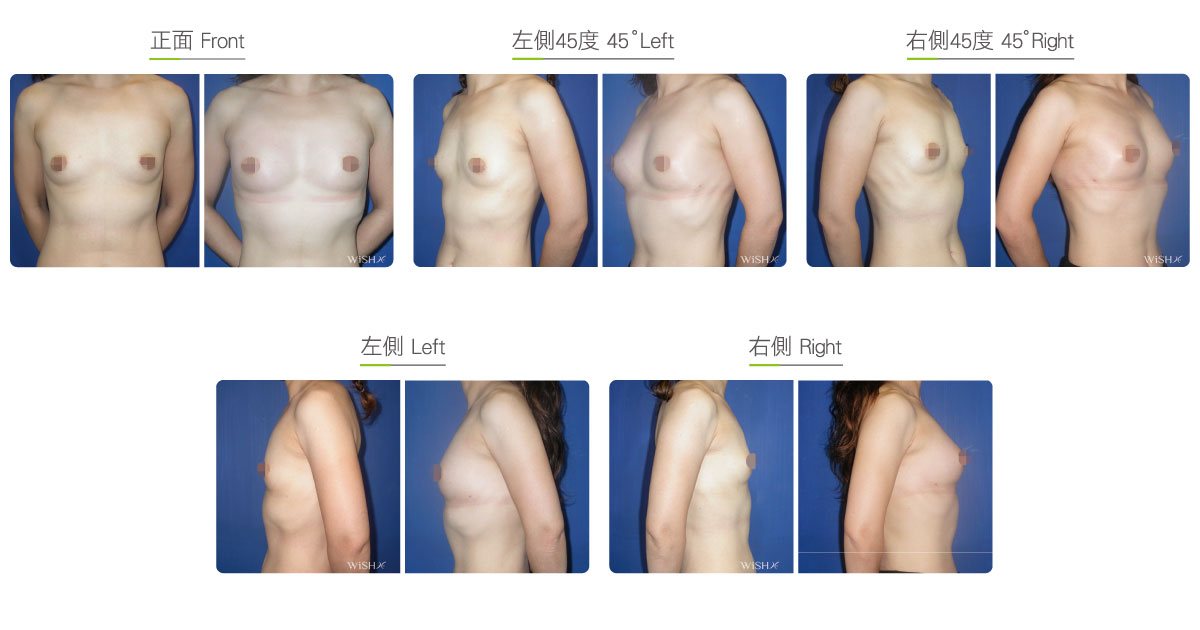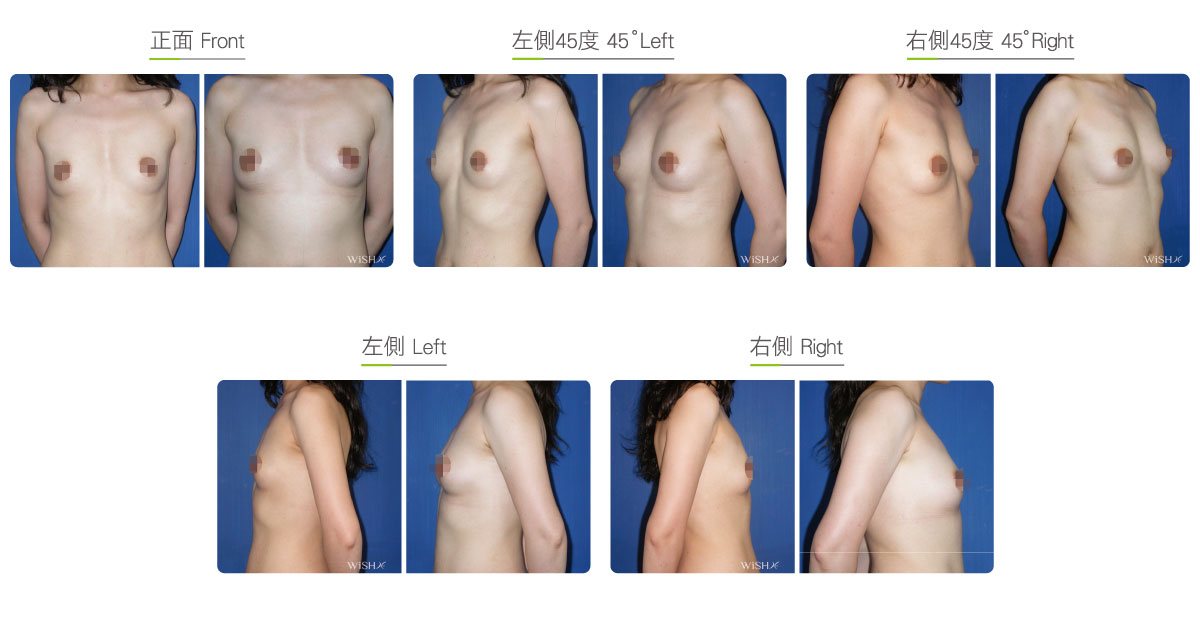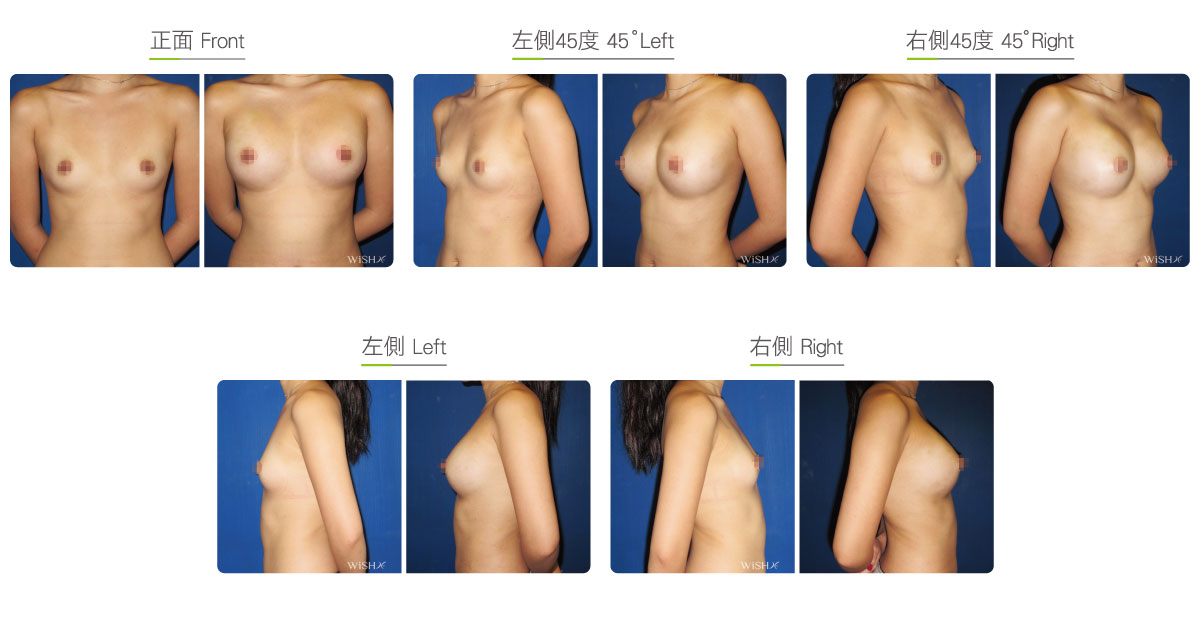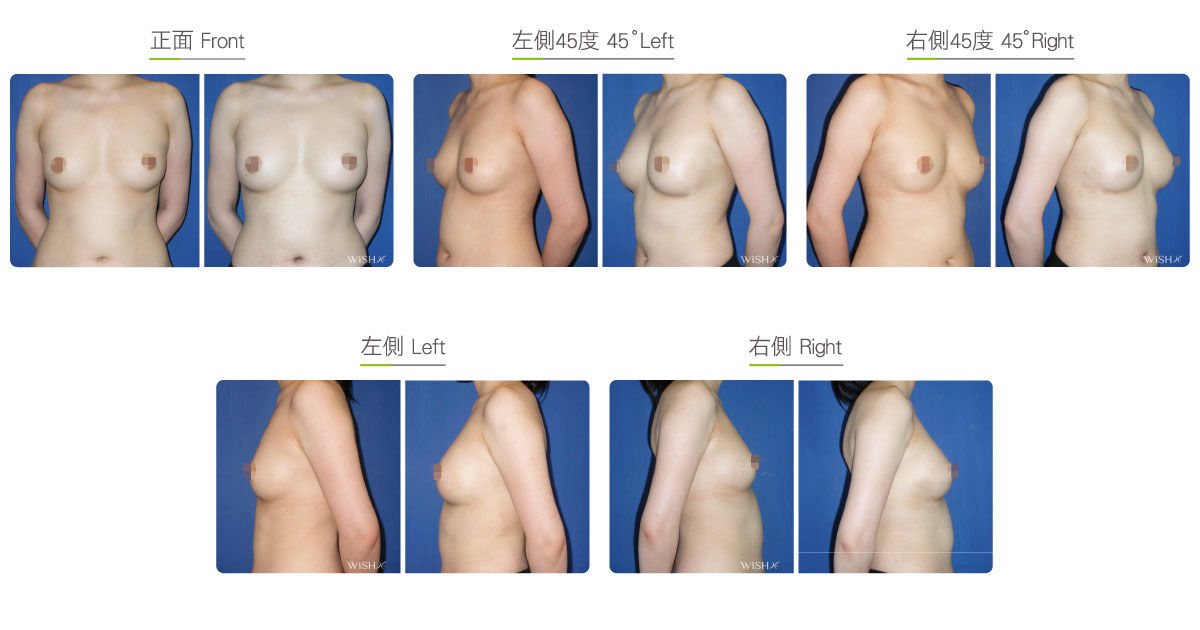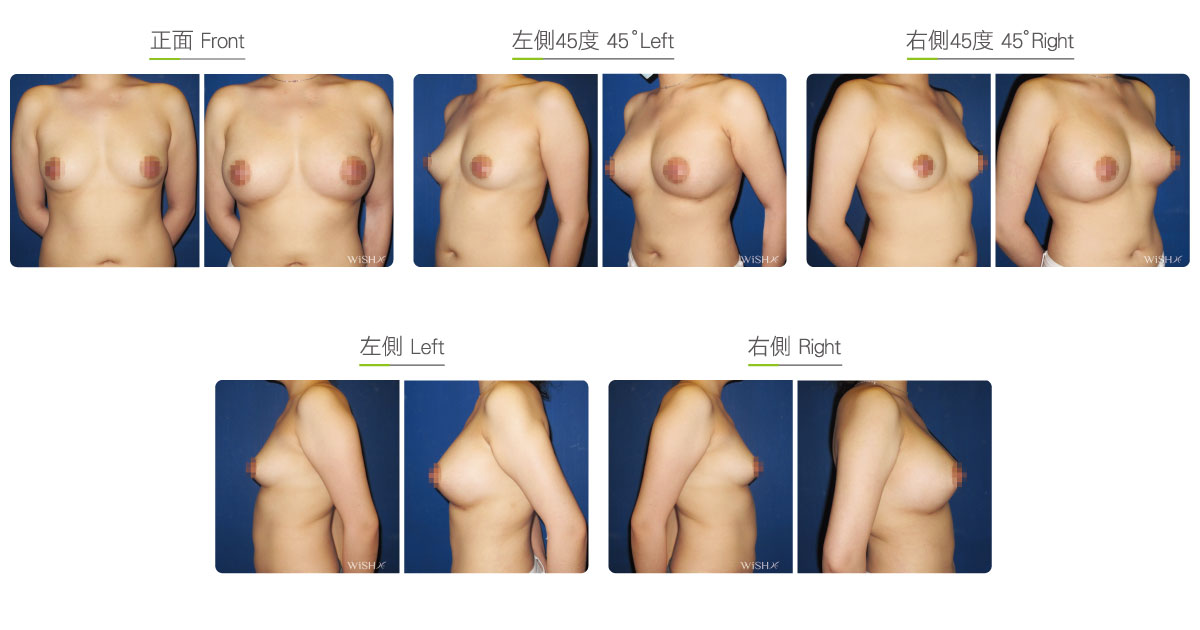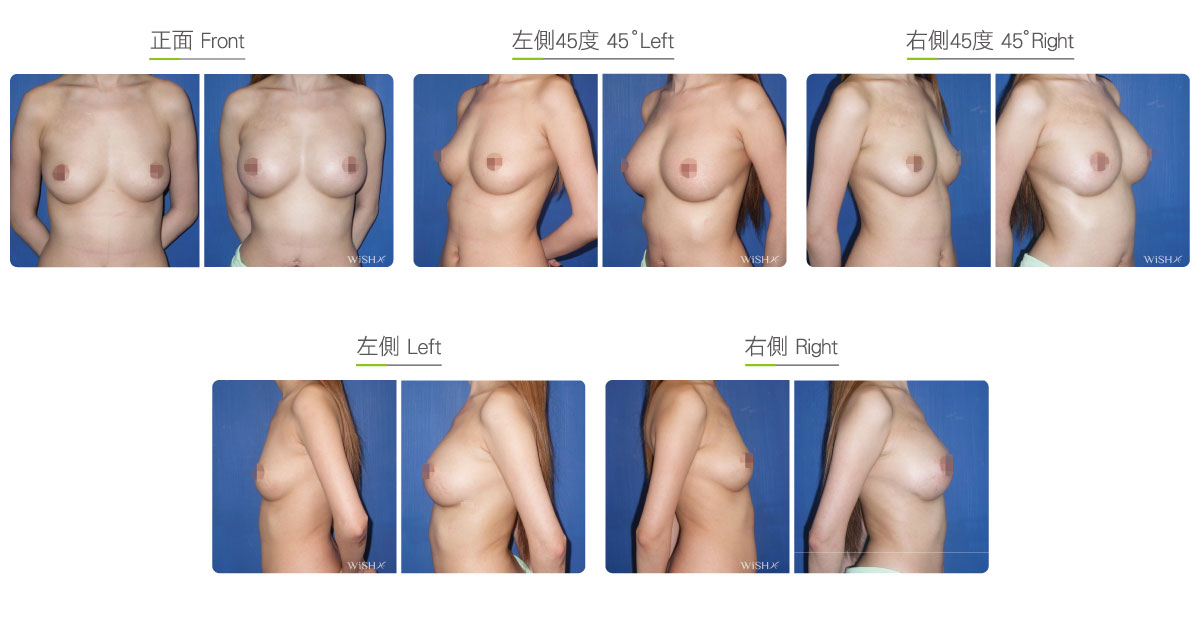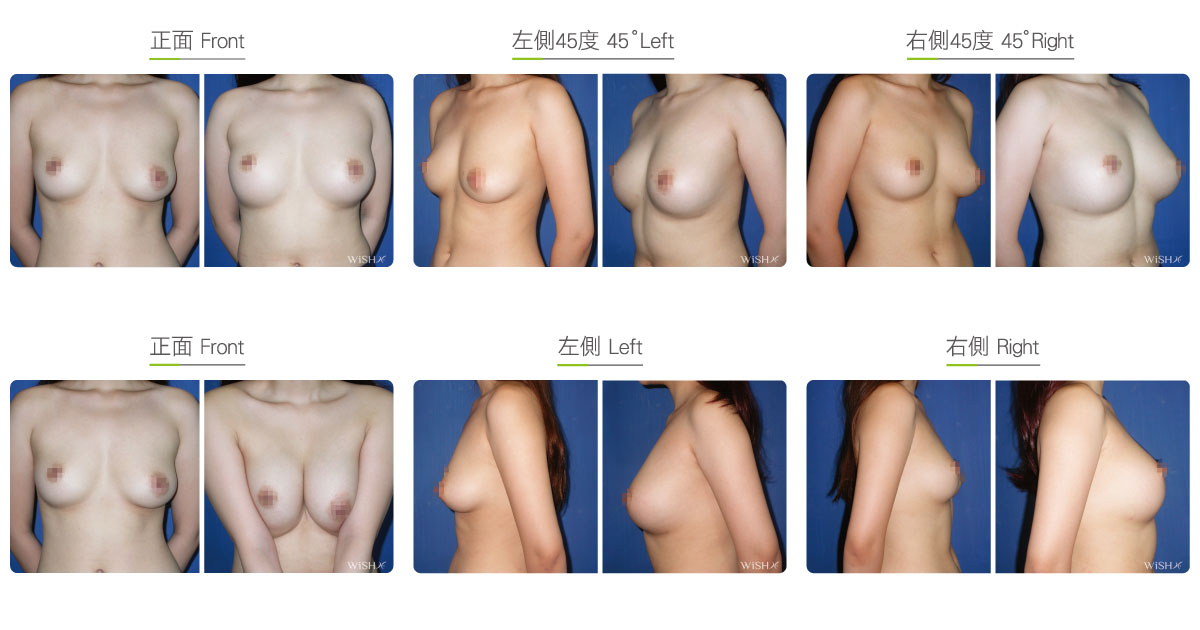Primary Breast Augmentation
Compared to augmentation with breast implants, there are no special limits or restrictions to augmentation using autologous fat; the most basic requirement is the presence of sufficient amount of fat in other parts of the body. Thus, any adult woman weighing more than 45 kg with BMI greater than 19 kg/m2 or with a sufficient amount of fat in other body parts (e.g., abdomen or thighs) is an ideal candidate for breast augmentation by autologous fat transfer. However, if patients are too thin or skinny, there would be insufficient amount of fat to achieve the desired result. Thus, Dr. Chuang recommends these patients to first gain 5–8 kg before undergoing autologous fat augmentation.
Autologous Fat Transfer Equation
Simple calculations can estimate the amount of fat needed for autologous fat transfer. If one plans to upgrade by 1 cup size, then on average, each breast would require a final amount of 120–150 cc surviving fat, a total of 240–300 cc for both breasts. Considering 30% of loss and absorption of fat under the most ideal conditions, a gain of 1 cup size would need at least 340–420 cc of purified fat for injection. However, only approximately one-third of the fat content from liposuction can be used after filtrating
blood and impurities. Thus, at least 1000–1200 cc of fat is necessary from other parts of the body to increase 1 cup size. This is the estimate under the most ideal conditions. If patients are more prone to absorption, then more fat would be needed to gain a cup size.
Equation: Fat from Liposuction × 1/3 = Fat for Injection
Fat for Injection × 1/2 × 0.7 = Optimal Surviving Fat for One Breast (1 cup requires approximately 120 cc)
We currently use the liposuction machine with the most stable suction pressure, the Swiss-made Medela Dominant 50, along with the closed purification system Puregraft from Cytori. Puregraft allows fat isolation to be performed without contact with the atmosphere and prevents fat cell necrosis or infection. Dr. Chuang also conducts SVF extraction to separate the stem cell-rich content from the plasma and mix it with purified fat for injection into the breast. This new cell-assisted lipotransfer not only conserves most growth factors and stem cells to increase the survival rate of autologous fat to more than 60% but also reduces the ratio of absorption and lowers the chance of complications such as breast calcification or lumps. Purified fat is injected at various levels and directions in radial patterns (1 cc/cm2). Fat cells are injected in a micro quantity and in various spots into the superficial, subglandular, and intramuscular layers of the breast. Injection into mammary gland tissues needs to be avoided to prevent lumps, cysts, or mastitis. Lastly, based on the differences between the two breasts, small adjustments are made with the injections to obtain symmetric and full-looking breasts.
Autologous fat transfer also has easier postoperative care requirements than implants. In contrast to breast massage, one should avoid compressing the breasts to avoid affecting the sculpted positions of fat and increasing the chance of absorption. If possible, patients should sleep on their back for at least a week because tightened skin or the compression of the breasts can affect the circulation between new capillaries and grafted cells, which influences the growth and survival of fat cells. This surgery does not require ice compress. Two weeks after surgery, patients can start warm compresses to promote fat integration and reduce swelling. It is normal to feel breast lumps at this stage. Patients can perform moderate breast massage in a circular motion to speed up the metabolization of lumps. The lumps would gradually disappear within 6 months, and the absorption of fat would also stop.
Factors that Affect Autologous Fat Survival
The most critical part in autologous fat transfer breast augmentation is the estimation of the survival rate of fat cells (or in other words, the final result). Along with the revised surgical method and growth factors used, factors affecting fat absorption include habits such as smoking, staying up late, alcohol consumption, dieting, taking regular hot baths, excessive massage, jetlag, poor sleep schedule, major diseases, or even mental stress and illness, all of which can reduce the survival of fat. In order words, to keep the results stable, patients should maintain a good sleeping schedule, avoid excessive smoking or alcohol consumption, maintain or even gain weight, and consume a high-calorie diet with eggs, meat, and collagen after the surgery, which may enhance the result of fat transfer breast augmentation.
Ways to enhance the result of autologous fat transfer in breast augmentation
What the surgeon can do?
- Carefully select the location of liposuction that can provide a sufficient amount of fat.
- Use a large-diameter probe to reduce damage to fat cells.
- Use gentle low-pressured suction to maintain the integrity of fat cells.
- Mix autologous growth factors to activate fat cells.
- Use a closed fat purification system to reduce the chance of fat cell death due to contact with the atmosphere.
- Inject using multi-level and multi-faceted methods to increase contact between fat cells and capillaries.
- Control the amount of fat injected to prevent the development of fat lumps or inflammation.
What the patient can do?
- Try to sleep on the back for a week after surgery to prevent compressing fat cells.
- Avoid excessive alternating hot and cold stimuli after the surgery; no ice or warm compress unless necessary.
- Avoid compressing or rubbing the breasts for a month to avoid fat displacement.
- Maintain a regular schedule after surgery, and avoid smoking and alcohol consumption as much as possible.
- Avoid dieting for 6 months after surgery to prevent excessive fat loss.
- Consume a diet high in purine and calories to provide more nutrition to fat cells.
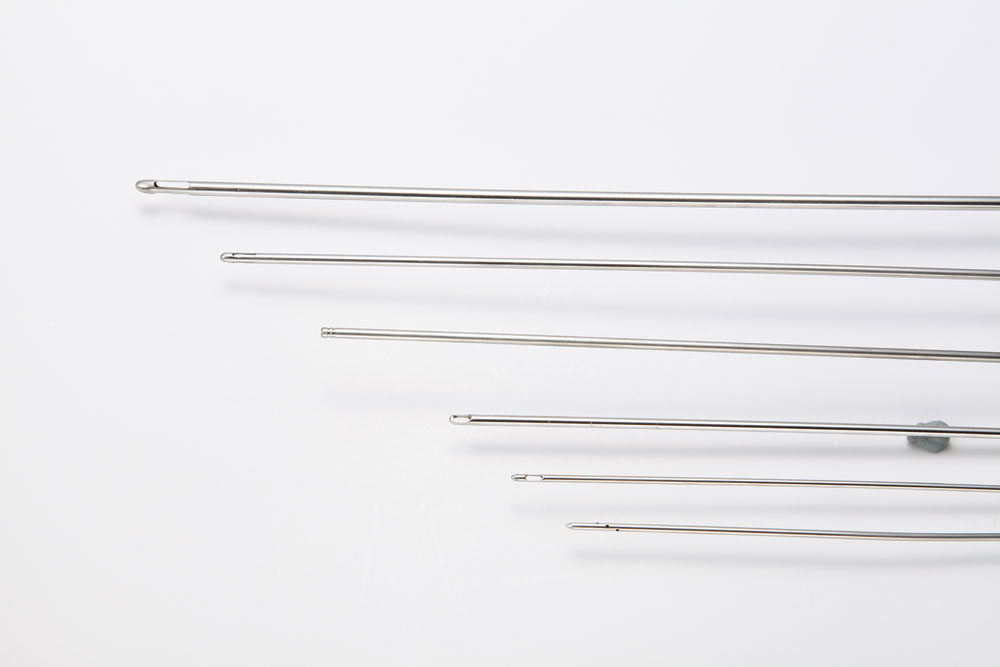
Flexible application of various liposuction method and tools will increase the survival rate of autologous fat transfer.
Surgical conditions
Duration
- Type of anesthesia: General anesthesia or IV sedation
- Type of incision: 0.3-cm incisions in the medial and lateral lower breast
1-cm liposuction incision (belly button or groin) - Recovery: 2–3 days
- Removal of stitches: 5–7 days
General instructions
No food and water on the day of surgery
- Stimulation with cold compress or excessive heat should be avoided for 2 weeks postoperatively.
- Compression or aggressive massage of breasts should be avoided for 1 month postoperatively.
- Smoking and alcohol consumption should be avoided for 3 months postoperatively.
- Dieting should be avoided for 6 months postoperatively.
- Periodic follow-ups and check-ups are necessary if breast lumps are observed even after 6 months.
Ideal candidates
- Those with a flat chest and who do not want implants.
- Those who are undergoing liposuction in other parts of the body and desire breast augmentation.
- Those who meet the standard BMI for autologous fat transfer.
- Those who would like to correct breast asymmetry or other special breast shapes.
- Those who would like only a 1 cup increase in breast size.
- Those who are concerned about the texture and sense of touch of new enlarged breasts.
Possible complications
- Breast calcification
- Unknown lumps
- Fat necrosis
- Fat inflammation (cyst)
- Autologous absorption
- Asymmetry
- Unsatisfactory results
Surgical advantages
-
Breast texture is the same as that of real breasts.
-
No risk associated with implants such as capsular contracture and malposition./h3>
-
No need for breast massage after operation.
-
No incision or scars associated with implants.
-
Minimal pain and short recovery.
Surgical drawbacks
-
Problem with autologous absorption; the surgical result varies.
-
Long-term effect still needs to be verified.
-
Breast calcification or lumps may occur.
-
Mammogram screening may be affected.
-
Additional surgeries may be needed in the future to enhance the result.
-
Contraindicated for those with a family history of breast cancer or multiple cysts.

